
Architectural Styles and Revivals
(written by Dr. Les Crocker, UWL Emeritus Professor of Art History)
This is the first of a series of blogs on the major architectural styles used in La Crosse during the nineteenth century. I have tried to use images of buildings still in existence so you can go look for yourself. Unfortunately, there were some great buildings that no longer exist, for a variety of reasons. I have used some of those buildings in this first blog. They do not relate specifically to the text, they are just me saying, "Here are some buildings that once existed."
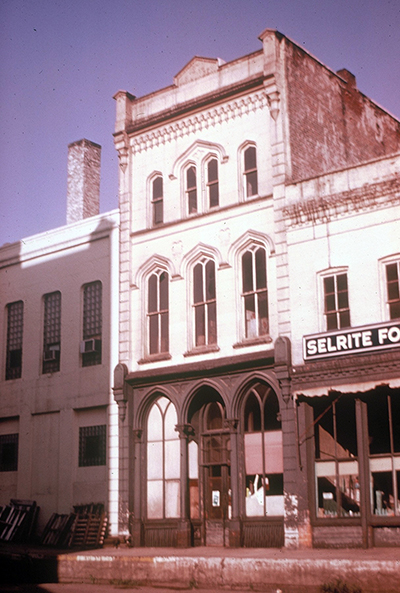
The Jungen building from 1870 had a great ground floor front of cast iron with flattened pointed arch window heads on the upper floors. It was razed as part of an urban renewal project. 1970 photo by author.
All architectural revivals are styles, but few styles are revivals.
Style is a way of doing something. We have styles in fashions, especially women's clothing. Hem lines go up or down. Certain materials become popular and then fade away. Hat or no hat. In automobiles, styles change every year. A 1957 Ford is easily recognized as very different from a '57 Chevy. Styles, by their definition, change frequently, sometimes radically, sometimes slowly as elements of an older style are retained but new features are added. If a style persists for a long period of time, it becomes a tradition.
In architecture, a revival brings back into use an older method of building or decorations from an earlier time. Buildings are always affected, one way or another, with the materials used to construct them. Greece and Italy both have a surplus of stone and a relative scarcity of large trees. But cut stone was expensive in the United States while in most areas there was a surplus of trees to make wooden columns and pediments. So, the whole idea of a “revival” is very limited in what may be revived, and the term should be considered a commonly used, but limited, identifier rather than an exact descriptor.
There are only three major architectural revivals in the early nineteenth century: Roman, Greek, and Gothic; and only three in the second half of the century: Queen Anne, Romanesque, and Colonial. In the middle is the Italianate, which was never a revival but rather an exotic concept that allowed a lot of design freedom because it had such a limited context and no limitations caused by earlier prototypes.


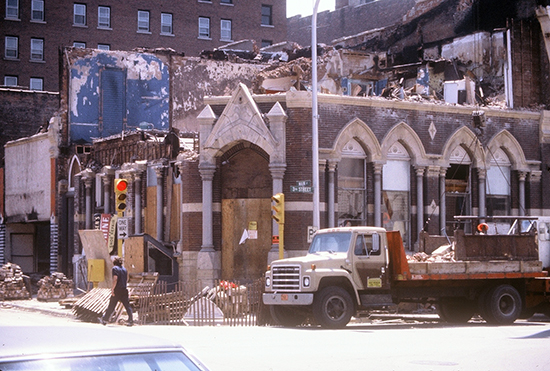
The La Crosse National Bank on the southeast corner of Main and Third was a great Gothic Revival building in the style of Venice from 1881. It was burned down in 1980 in an insurance scam. That's why there is an empty spot on that corner. 1980 photo (bottom) by author.
Technically speaking, since the United States never had original examples of any of these styles, except the Colonial, we shouldn't consider any of them as revivals; they were never here originally, so by definition they can't be brought back. Whereas in Europe, four of these styles existed at an earlier time so they could be considered revivals of what had existed earlier. The first three, Roman, Greek and Gothic were tied into all sorts of literary, artistic, political and cultural aspects of European culture. They were part of a much larger phenomenon as Europe discovered its past.
That was not true of the later styles. In the second half of the century, closer to 1880, the Queen Anne style and Romanesque revival were primarily architectural styles. There aren't any romantic poems about Romanesque chalices although both styles inspired a few muddled paintings. There were efforts to make Charlemagne and some religious figures from the period into heroes, but the Greek, Roman and Gothic worlds had all the great stories and much larger than life characters.
There were other styles that could be considered revivals, such as Egyptian, Chinese, or Second Empire, but they were seldom used in Europe or the United States. La Crosse had an early jail that was Egyptian Revival, and the style was sometimes used in funerary architecture for tombs and cemetery gateways. The most notable instance of Chinese Revival is at the Royal Pavilion at Brighton, England. The wonderful chairs in the great dining room are cast iron imitating bamboo.

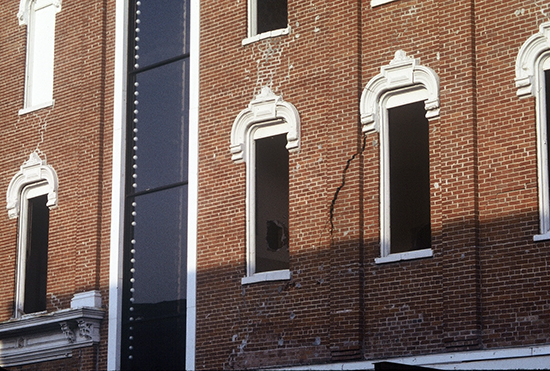


The northeast corner of Third and Main was the site of the Post Office Block, an Italianate building with two story pilasters and brackets under the eaves. A new owner put in a glass fronted elevator shaft at the north end of the building for a nightclub on the upper floor. Cracks developed the wall began to bulge, and half the building had to be demolished. That's the reason there is a gap on the northeast corner of Third and Main, the former heart of the commercial district. 1981 photos (bottom three) by author.
Now let me put these general comments into the cultural context of the United States. After the revolt against England the leaders of our new nation wanted to separate our country from our 'enemy.' Today, after over two hundred years of separation, it is obvious to all that while England and the United States have different political systems, we share more cultural aspects than differences.
The early efforts to create an 'American architecture', as opposed to an 'English architecture' failed for several reasons. There had never been an 'American architecture' to begin with because the colonies in what would become the United States were vastly different. We tend to think of all of the colonies as being English, but there were also colonies of the Spanish, French, Dutch and even Russian people in North America. Even within the English colonies there were vast differences caused by the geographical origins of the settlers, the local climate, and the materials available for building. For example, in Massachusetts, the primary concern was heat retention because of the long winters whereas in the Carolinas winters were brief but the long, hot, humid summers demanded more windows for ventilation, deep porches for shade, and high ceilings.

The Mons Anderson building was one of the largest single buildings in the city in 1870, a combination factory and dry goods store.
Construction techniques brought with the immigrants from Europe did not always work well in the new land, requiring changes in their traditions. Different areas of England had different building materials and thus different building traditions. There was no 'English' way of building. The settlers of Virginia used brick because their English ancestors had used brick and they had good clay. The settlers of Massachusetts used wood because that was the preferred material in the English counties that they came from, and it was necessary to clear the trees anyway. So, there couldn't be an 'American style' because there was no consistency among the original English colonies. Those differences would return in the late nineteenth century when the so-called Colonial Revival developed. More on that later.
The three early revivals, Roman, Greek and Gothic were supported by buildings from the past that still existed in Europe. At the beginning of the “Modern era,” let's say 1750, Roman buildings still existed in great numbers in Italy and in lesser numbers throughout Europe. There were also a few remaining Greek temples in southern Italy. Around 1750 it became the custom for wealthy young men, especially English men, to go on “The Grand Tour” as a way of completing their education. Travel onto the continent brought them into contact with the earlier cultures and gave perspective to their own country. Buildings from the Gothic period, 1100-1400, are still common throughout England so no one had to travel far to see examples of that style.
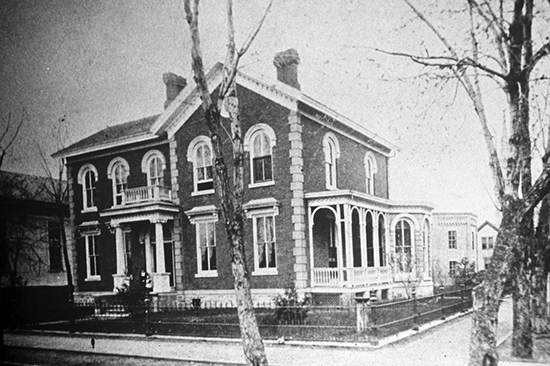

The Selig Davis house built in 1870 was on the corner of 4th and Cass where the old Tribune building now stands. Within a few years the owner had money troubles and the house was used for a variety of businesses.
The Roman, Greek, and Gothic revivals were cultural phenomena, not just architectural styles. They were also manifested in the decorative arts, furniture, jewelry, ceramics, etc. but especially in literature. Historical research established the list of Roman rulers, English kings, popes and other religious leaders, and major wars that provided a factual framework for looking at the past. Writers soon used these past cultures as settings for fictional stories and plays of romance, adventure, travel, even mysteries. The novels of Sir Walter Scott were enormously popular throughout the western world. In La Crosse, many of the tiles on the fireplace at Mons Anderson's house depict scenes from Scott’s works. Lord Byron and Percy Shelley used poetry to recall the Greek world.

The Levy house originally had a mansard roof. See my blog The Mysterious Octagon for more on this fascinating house owned by this longest lived of the early settlers.
Many of the founders of this country read Greek and/or Latin on a daily basis; for pleasure and for guidance. The philosophers of the ancient world were very concerned with what kinds of government were possible and which were best. Their historians assembled knowledge about other cultures, other times, other places. This knowledge was not always accurate, but it was all that was available to the leaders of the new nation.
While Greece and Rome were searched for answers, no sane person in the Gothic revival period ever considered bringing back kings and castles, except perhaps the upper class of England. In his book The Return to Camelot, Chivalry and the English Gentleman (1981) Mark Girouard records in depth the tournament held in 1838 by Lord Eglinton, a young, wealthy English gentleman overcome by his romantic view of England's past, who held a medieval tournament. Thousands were invited to come, in medieval costume, to watch the meticulously planned event. Tents were erected, family armor dusted off, and horses were decorated.
And then it rained, and rained, and rained. Some historians with tongue in cheek suggest that 1838 marked the end of the Gothic world as well as that of the Gothic Revival as it was washed away into deserved oblivion. But the style survived in the far-off land of North America where it had no roots.
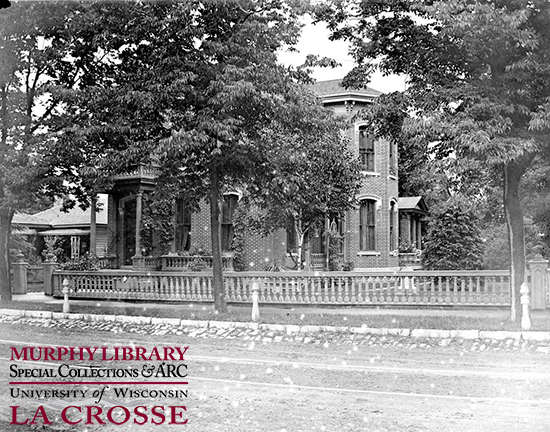
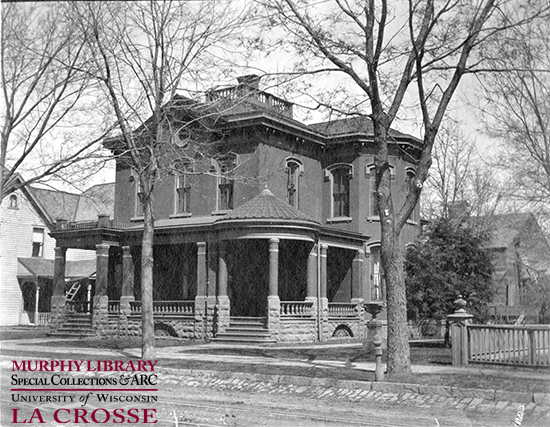
John Pamperin, the cigar maker, owned a great Italianate brick house. He later added a Queen Anne porch that worked well with the earlier style.
Most architectural examples of the three early revivals in the United States were designed by knowledgeable amateurs; there were very few formally trained architects in this country until the 1880s. Men like W.H.J. Nichols in La Crosse between 1855 and 1872, who were carpenters with extra design skills aided by books that showed everything from how to build a curved stairway to the four column types from the Greek and Roman worlds, were the designers as well as the builders of our Midwestern towns.
After the Civil War there was great interest in architectural styles in the Midwest. There were numerous magazines devoted to individual styles as well as more general architectural topics. The rapidly growing middle class was building new homes at an unprecedented rate and everyone wanted the latest fashion, but there were so many competing choices.
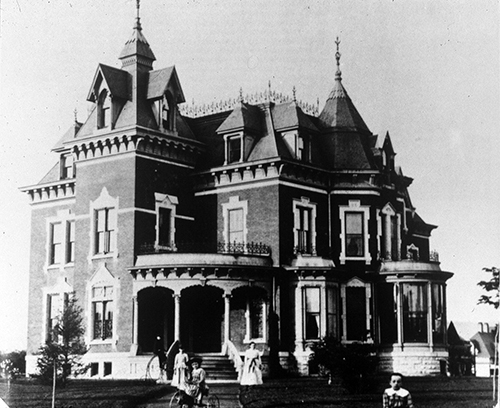

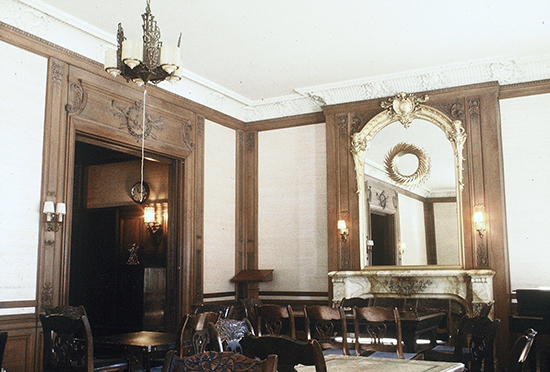
The first Cargill house from 1882 was a mix of styles that was remodeled into an Italian Baroque Palace in 1905. 1974 photo by author.
The Queen Anne was never a unified style. It developed from the English Queen Anne revival but had influence from the Gothic Revival as well as various medieval cultures. The result was a diversity of sub-styles that are lumped together under that broad term.
Two Revival styles appeared about 1880, the same time as the Queen Anne which is considered a separate style in the United States but a revival style in England. The Romanesque revival rejected the thin wall, large windows and pointed arches of the Gothic Revival in favor of the Roman round arch and massive walls. The Colonial Revival sought to bring back the architecture of the Colonial era of the United States but without a consensus of what that architecture had been the whole thing became a cosmetic way of saying, “I'm hip, I'm modern”.
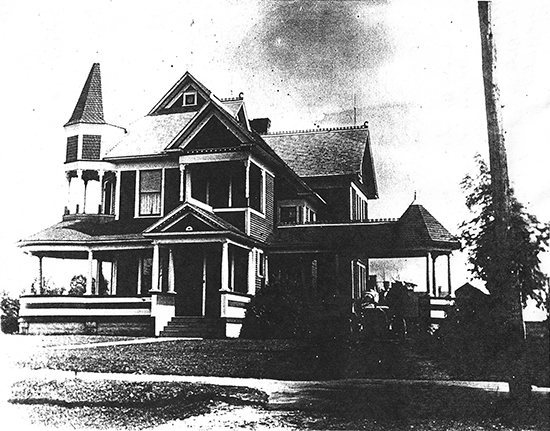
If you recognize this currently unknown house, please contact the La Crosse Public Library Archives.
The postmodern rejection of decoration and a desire for cheaper buildings resulted in the present situation where a few boards nailed to the wall indicate half-timber construction and a single pointed arch in the attic window is enough for Gothic revival. The architectural forms were once symbols but now no one remembers what the symbols stood for, and all the past styles have become curiosities at best and meaningless decoration at the worst.
Other entries in this series
Architectural Styles and Revivals: The Greek and Roman Revivals
Architectural Styles and Revivals: The Gothic Revival
Architectural Styles and Revivals: The Exotic Revival
Architectural Styles and Revivals: The Italianate Style
Architectural Styles and Revivals: The Second Empire Style
Architectural Styles and Revivals: The Queen Anne Style
Architectural Styles and Revivals: The Colonial Revival
Architectural Styles and Revivals: Romanesque Revival Public Buildings
Architectural Styles and Revivals: Romanesque Revival Commercial Buildings
Architectural Styles and Revivals: Romanesque Revival Homes
Architectural Styles and Revivals: Religious Romanesque
